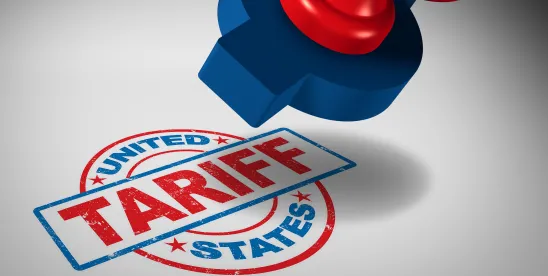Following up on a key campaign promise, President-elect Donald Trump has announced plans that he will immediately impose a 25 percent tariff on all goods imported into the U.S. from Canada and Mexico and an additional 10 percent tariff on goods from China on his first day in office.
As the majority of imports from China are already subject to additional 25 percent tariffs under Section 301 of the Trade Act of 1974, most China tariffs under the new Trump administration will be at least 35 percent, but for certain sectors and industries, China tariffs may also be higher (between 60 percent-100 percent).
Companies affected by these new tariffs are now considering what options are available to mitigate the higher costs associated with U.S. imports from these three countries. Such options may include, for example, review of tariff classifications, valuation, and country of origin; Foreign Trade Zones (FTZ); revision of shipping terms of sale in contracts; possible exclusion requests; and advocacy/lobbying efforts.
An interesting question being discussed is which legal mechanisms President-elect Trump will use to impose the new tariffs. While not an exhaustive list, below are five potential legal mechanisms, each of which has a different timeline:
- Legislation: Congress, in 2025, must pass a “tax extenders” bill extending various tax breaks that are set to expire. In order to ensure that this legislation is revenue neutral, Congress must search for “pay fors” (i.e., things that can be stuck in the legislation to raise money). Senate staff has floated the idea of including tariff increases as the “pay fors” in this upcoming tax bill. It is unclear whether the House or a Trump White House would go along with this proposal. While there is a consensus that the tax extenders legislation must move in the coming year, it is impossible to predict exactly when the legislation may move.
- The International Emergency Economic Powers Act (IEEPA): This law authorizes the president to “regulate” the importation of any “any property in which any foreign country or national … has any interest” in response to an “unusual and extraordinary threat, which has its source … outside the United States, to the national security, foreign policy, or economy of the United States.” IEEPA permits the president to act immediately to address this “unusual and extraordinary” threat; there is no waiting period for IEEPA tariffs.
- Section 301 of the Trade Act of 1974: Section 301 authorizes the U.S. Trade Representative (which is part of the White House) to impose tariffs or quotas on imports from countries that violate U.S. trade agreements or engage in acts that are “unjustifiable” or “unreasonable” and burden U.S. commerce. A new Section 301 action requires an investigation, which includes a hearing, solicitation of public comments, and consultations with the foreign government(s), followed by a recommendation to the president. This investigation must take no longer than one year.
There is no minimum amount of time prior to imposition of tariffs under a new Section 301 investigation, but consultations, a hearing, and solicitation and consideration of public comments takes some time. Such a process also likely requires a U.S. Trade Representative (USTR) to be in place after confirmation by the Senate – something that may take a few months in a new administration.
President-elect Trump, though, may claim that any new China tariffs are not a “new” Section 301 investigation, but are merely an amendment to the 2018-2019 China Section 301 tariffs action. If so, certain court decisions imply that the USTR must still solicit and consider public comments (which would take at least 30 days), but may forgo a hearing, government consultations, and a report to the president from USTR.
- Section 232 of the Trade Expansion Act of 1962: Section 232 authorizes the president to impose tariffs or quotas if imports of an article threaten national security. The statute requires the president to be in receipt of a report by the U.S. Department of Commerce before implementing Section 232 tariffs or quotas, and gives the Commerce Department 270 days to deliver the report to the White House after initiation of an investigation. The statute does not impose any other procedural requirements or stipulate a minimum “waiting period.”
In the past, the Commerce Department has held hearings and solicited public comments prior to delivering its report to the White House, but these steps are not explicitly required by the statute. In other words, the only reason that action under Section 232 cannot be immediate is that the statute requires the president to receive a report from the Commerce Department before taking action.
- Section 201 of the Trade Act of 1974: Section 201 permits the president to impose tariffs or quotas when imports of an article have surged and are a substantial cause of serious injury to U.S. industry. Section 201 investigations are conducted by the International Trade Commission (ITC). Because the ITC is an independent, bipartisan commission, it is almost certain that the Commission would take the full time allotted by law in a Section 201 investigation, regardless of any pressure from the White House.
Under the law, the ITC has 180 days (which would include a hearing and the solicitation of public comments) to make a recommendation to the president regarding what relief would prevent or remedy the injury and facilitate industry adjustment to import competition.
President-elect Donald Trump on Monday pledged big tariffs on the United States' three largest trading partners - Canada, Mexico and China - detailing how he will implement campaign promises that could trigger trade wars.





 />i
/>i
